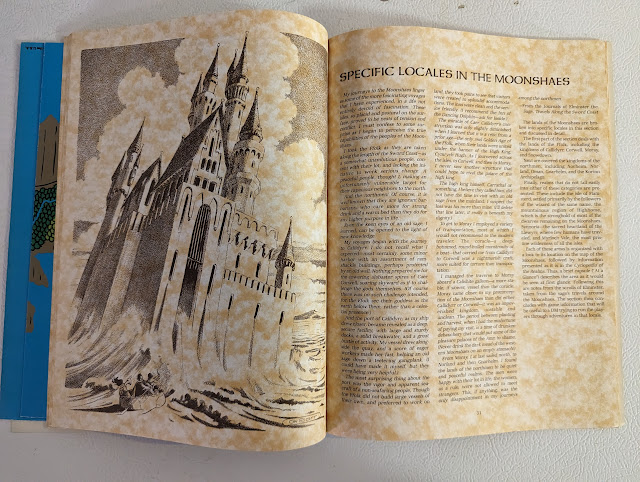It's Thursday and that means Supernatural day (well it is also Star Trek Discovery day, but that will wait till Fridays).
I thought another NIGHT SHIFT character write-up was in order, and one with some solid geek cred. Charlie Bradbury played by geek icon Felicia Day.
Charlie Bradbury
(supernaturalwiki | supernatural.fandom)
Charlie, real name Celeste Middleton, was a techie and hacker turned Hunter and "Woman of Letters." She met up with Sam and Dean during the Leviathan outbreaks (Season 7, "The Girl with the Dungeons & Dragons Tattoo") where she quickly proves her worth to the hunter's cause. She is smart, quirky, so steeped in Geek culture, and really quite a delight. We also learn that she is one of the very few in the world that can't be copied by the Leviathans (her and Bruce Springsteen). She becomes a hunter, but really shines when becomes an honorary Woman of Letters. Well...I guess a real one since there were no more Men of Letters in the US save for Sam and Dean.
She picks up a little magic here and there. Picks up a couple of women, including a faerie princess and notorious witch hunter Dorothy Baum/Gale.
Sadly Charlie, like pretty much everyone in the Winchesters' life, was killed. She was murdered by the Styne's, the modern descendants of Dr. Frankenstien. While her death didn't raise the ire that say Tara's or Lexa's did, it did raise concerns because she was such a beloved character.
Charlie Bradbury
7th level Sage, Human
Strength: 12 (0)
Dexterity: 13 (+1) s
Constitution: 14 (+1)
Intelligence: 18 (+3) P
Wisdom: 17 (+2) s
Charisma: 18 (+3)
HP: 33 (7d6)
AC: 9
Fate Points: 1d8
Check Bonus (P/S/T): +4/+2/+1
Melee bonus: +0 (+1) Ranged bonus: +0 (+1)
Saves: +3 to spells and magical effect
Special Abilities: Open locks 35%, Bypass traps 30%, Sleight of Hand 40%, Move Silently 40%, Hide in Shadows 30%, Climb 75%, Danger Sense 50%, Perceptive 80%, Mesmerize 70%, Lore 88% (special bouns +15% for computers, +5 for magic)
Skills: Forgery (Dex), Computers (Int) x2, Knowledge (Int), Research (Int)
Languages: English, Elvish, Dothraki, Greek, Latin
Spells
1: Detect Magic, Bane, Sleep
2: Locate Object, Suggestion
3: Remove curse
Notes: Charlie became the adopted younger sister of the Winchesters. While I was never happy with her death, the show treated her well both before and after and there was a strong sense of loss and mourning on the show. Besides. Dean, at great risk to his own soul, kills every single member of the Styne family in retaliation.
 |
"Later Bitches!" - Charlie |
Charlie Bradbury, Apocalypse World
(supernaturalwiki | supernatural.fandom)
When the Nephilim Jack began to open portals one opened to a world where the Winchesters were never born. This world had been overrun with demons so bad that the Angels came to Earth to eradicate them. And then they kept on going and started killing humans. A resistance front grew and one of their commanders was Charlie Bradbury.
Charlie, along with alternate version Bobby and others came to the Winchester's world to escape. Charlie became a hunter in this world too. She was the same person, but only more hardened and serious.
Charlie Bradbury
3rd level Survivor/4th level Veteran, Human
Strength: 12 (0)
Dexterity: 13 (+1) s
Constitution: 14 (+1)
Intelligence: 18 (+3) P
Wisdom: 17 (+2) s
Charisma: 18 (+3)
HP: 33 (3d4, 4d8)
AC: 9
Fate Points: 1d8
Check Bonus (P/S/T): +4/+2/+!
Melee bonus: +0 (+1) Ranged bonus: +3 (+4)
Saves: +3 to death attacks & area saves
Special Abilities: Open locks 35%, Bypass traps 30%, Sleight of Hand 40%, Move Silently 40%, Hide in Shadows 30%, Climb 75%, Danger Sense 50%, Perceptive 50%, Read Languages 80%, Tracking 70%, Supernatural Attacks.
Skills: Forgery (Dex), Computers (Int), Knowledge (Int), Research (Int), Survival (Wis)
Languages: English, Greek, Latin
Notes: This Charlie at first wanted to have nothing to do with the other Charlie's life and that included a friendship with Sam and Dean. Time in this world has mellowed her out a little. She even expressed curiosity about finding her and Charlie's former girl-friend. Charlie broke up with her in this world, but she was killed in Apocalpyse World.
Charlie spends some time with the witch Rowena as well. Regular world Charlie was a bit afraid of her, but Apocalpyse World Charlie is not so easily shaken.
Bobby: Rowena and Charlie are road tripping it through the Southwest.
Mary: That's trouble.
Bobby: Ginger trouble -- the worst kind.
- 13.23 Let the Good Times Roll
 |
Ginger Trouble |
So I really have to hand it to Felicia Day. Over the course of her tenure on Supernatural, she played three different (well four I guess) versions of Charlie and each one felt different. Regular Charlie, Good and Evil Charlies (split by the Wizard of Oz) and Apocalpyse World Charlie.
In truth, I was not a fan of Felicia Day until I saw her on Supernatural. Then I was like, "oh! so that is what all the fuss is about. I get it now."
Charlie would make a fantastic guest star on Wayward Sisters. The cast pulling her in when they need some magical help, since Rowena is unavailable. I can see Charlie eventually calming down and going more the sage route like her alternate did. Hell. I think it would be cool if Apoc Charlie came across a stash of journals and notes from her alternate from this world, maybe even taking a page from Star Trek III (because Charlie would have) and figured out a way to store part of her own katra onto the Internet before Styne killed her.
Lots of ways I could go with this character to be honest.

















